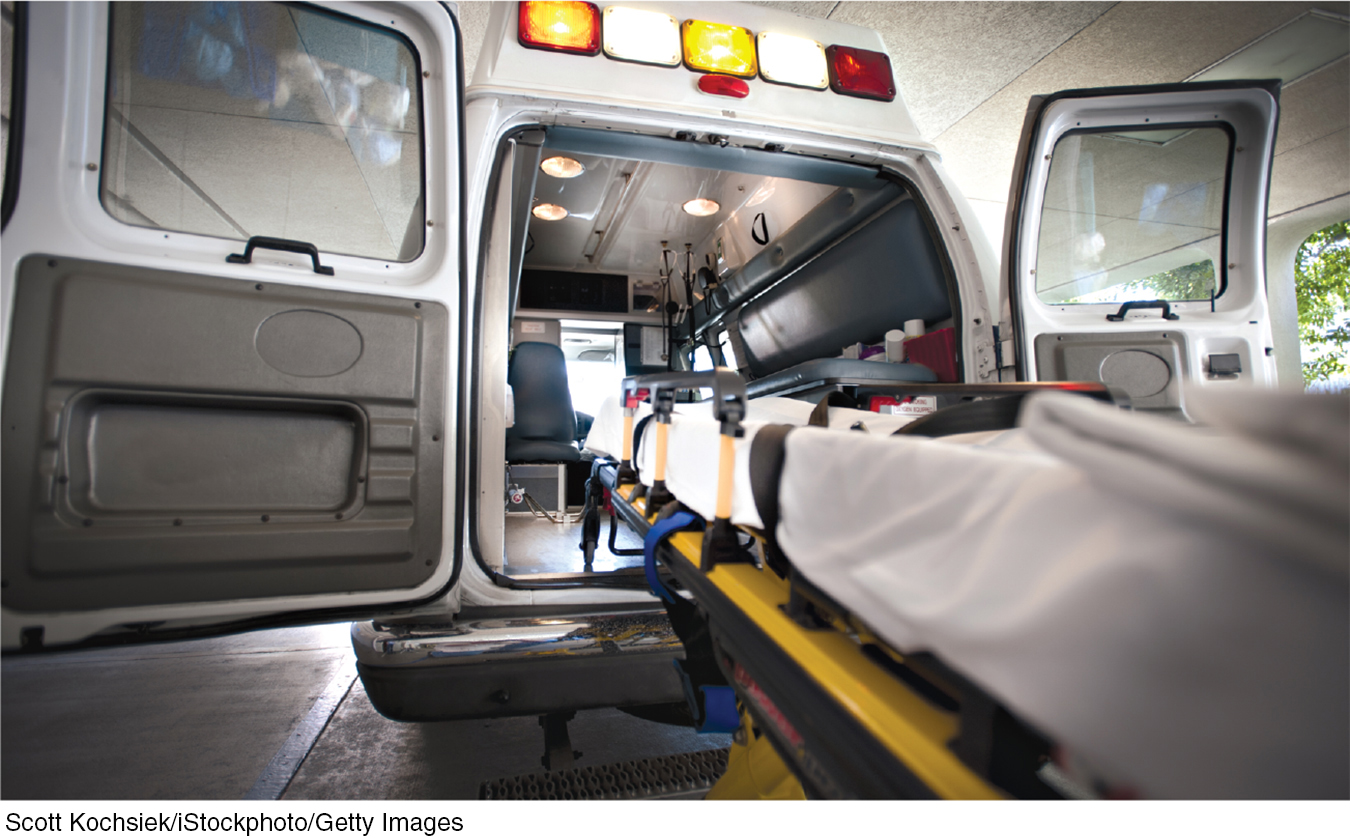Defining and Measuring Elasticity
137
Elasticity and Taxation
CHAPTER 5
TAKEN FOR A RIDE

What You Will Learn in This Chapter
Why economists use elasticity to measure responsiveness to changes in prices or incomes
Why the price elasticity of demand, the income elasticity of demand, and the cross-
price elasticity of demand are important indicators of consumer behavior in response to changes in prices and income Why the price elasticity of supply is an important indicator of producer behavior in response to changes in price
What factors influence the size of these various elasticities
How the price elasticities of supply and demand affect the costs and benefits of taxation
 | interactive activity
| interactive activity
IF YOU ARE EXPERIENCING A TRUE emergency, you aren’t likely to quibble about the price of an ambulance ride to the nearest emergency room. But what if it isn’t an emergency? Take the case of Kira Millas, who doesn’t even know who called an ambulance after she swam into the side of a swimming pool, breaking three teeth. Shaken, she accepted the ambulance ride to a local hospital, 15 minutes away. A week later, she received the bill: $1,772.42. Stunned, she said: “We only drove nine miles and it was a non-
Kira’s experience is by no means exceptional. Although ambulances are often requested by a bystander or by 911 dispatchers, it is the patient who receives the bill. Undoubtedly, in a true medical emergency, a patient feels fortunate that an ambulance is available. But even in nonemergency cases, like Kira’s, many patients often feel obliged to get into the ambulance once it arrives. And just like Kira, they are uninformed about the cost of the ride to the hospital. (With luck, they have recovered by the time they receive the bill!) And while many people have health insurance that will cover some or all of the cost of the ambulance service, the patient is ultimately responsible for paying the rest.
An estimated 40 million ambulance trips, at a cost of $14 billion, are provided each year by nonprofit entities such as local fire departments and by for-
Charges for an ambulance ride vary wildly across the country, from several hundred dollars to tens of thousands of dollars. The price may depend on many things other than the patient’s medical needs, from the level of skill of the ambulance team onboard to the distance traveled, or in some cases whether a friend or relative rides along (which can add hundreds of dollars to the cost). While it’s impossible to know the total amount that Americans are paying for ambulance services, Medicare, the federally administered health insurance program for Americans age 65 and older, has seen its spending on ambulance services explode, from $2 billion a year in 2002 to nearly $6 billion in 2013.
What accounts for the extreme variation in the cost of ambulance services? How are these services able to charge thousands of dollars, regardless of whether an ambulance is actually needed? Or to charge for an ambulance equipped with heart resuscitation capabilities when the patient has only a broken leg? The answer to these questions is price unresponsiveness: in the heat of the moment, many consumers—
138
Let’s consider a very different scenario. Suppose that the maker of a particular brand of breakfast cereal decided to charge 10 times the original price. It would be extremely difficult, if not impossible, to find consumers willing to pay the much higher price. In other words, consumers of breakfast cereal are much more responsive to price than the consumers of ambulance rides.
But how do we define responsiveness? Economists measure responsiveness of consumers to price with a particular number, called the price elasticity of demand. In this chapter we will show how the price elasticity of demand is calculated and why it is the best measure of how the quantity demanded responds to changes in price. We will then see that the price elasticity of demand is only one of a family of related concepts, including the income elasticity of demand, cross-
We will finish our discussion of elasticities by looking at how the price elasticities of supply and demand influence the costs and benefits of taxation.